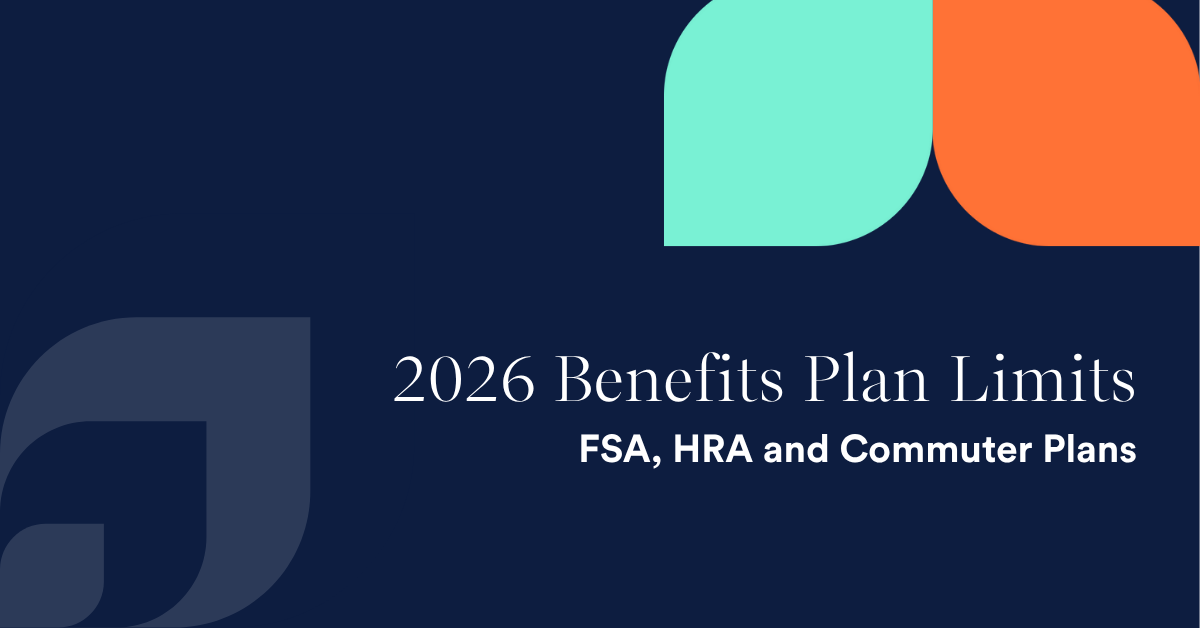A New Frontier for California SDI/PFL
By Vita on November 7, 2023

A new California law (SB 951) made two significant changes to the State Disability Insurance (SDI) and Paid Family Leave (PFL) programs.
- Increased Benefit Levels: SDI and PFL benefit percentages are increased as follows. Unlike previous benefit increases, these benefit increases do not include a sunset provision.
- In 2024: Benefit levels of 60%-70% of Average Weekly Wages (AWW), which were initially effective in 2018, have been extended through the end of 2024. These increases would have reverted absent this legislation.
- In 2025: Benefit levels will be further increased to 70%-90%.
|
Worker Earnings Compared to AWW
|
Benefit Level
|
Benefit Min
|
Benefit Max
|
|
70% of Less
|
90% benefit
|
N/A
|
N/A
|
|
More than 70%
|
70% benefit
|
63% of AWW
|
TBD
|
-
Elimination of Wage Cap: These benefit enhancements are funded by the elimination of the taxable wage limit on individual wages subject to the annual SDI withholding rate, effective January 1, 2024. The wage cap in 2023 was $153,164. In 2024, there will be no cap.
Higher Benefits for Lower Wage Earners in 2025
The new program retains the current structure that reflects two tiers of benefits based on wages earned by employees. Higher benefit percentage levels are provided to workers who earn lower wages. The specific calculation is based on an employee's quarterly wages compared to the average state wages. The formula is a bit convoluted, but a simplistic summary of the calculation can be expressed as follows:
- Employees Earning Less than 70% of Average Weekly Wage: Benefits will increase up to 90% income replacement under both the PFL and SDI programs (up from the current 70%).
- Employees Earning More than 70% of Average Weekly Wage: Benefits will increase up to 63% income replacement under both the PFL and SDI programs (up from the current 60%).
The average wage figure is calculated based on employees covered by unemployment insurance in California, as reported to the Department of Labor. For context, in 2021, the average wage figure was approximately $70,000 (based on Bureau of Labor Statistics OEWS reporting). Currently, low-wage earners are eligible for 70% income replacement of their regular wages under the programs.
How does all this work in real life?
Frankly, the minimum benefit of 63% of AWW can be a bit confusing. It exists to protect people from getting a lower benefit if their income is just slightly over the 70% of AWW level.
The best way to understand this is to look at examples at various income levels. The following examples assume the AWW for 2025 is $1,642. This happens to be the 2024 AWW. This number will change in 2025, but we will use it for the purpose of these examples.
|
Earnings % of AWW |
Weekly Earnings |
Benefit Percentage |
Benefit Based on Percentage |
Minimum Benefit (63% of AWW) |
Actual Benefit |
|
60% |
$ 985 |
90% |
$ 886 |
N/A |
$ 886 |
|
70% |
$1,149 |
90% |
$1,034 |
N/A |
$1,034 |
|
70%+$100 |
$1,249 |
70% |
$ 874 |
$1,034 |
$1,034 |
|
80% |
$1,313 |
70% |
$ 919 |
$1,034 |
$1,034 |
|
90% |
$1,477 |
70% |
$1,034 |
$1,034 |
$1,034 |
|
100% |
$1,624 |
70% |
$1,136 |
$1,034 |
$1,136 |
|
120% |
$1,970 |
70% |
$1,379 |
$1,034 |
$1,379 |
|
150% |
$2,463 |
70% |
$1,724 |
$1,034 |
$1,724 |
Note that the minimum benefit level of 63% of AWW creates a floor of benefits for individuals earning between 70%-90% of AWW. In short, it assures that no one will be financially penalized if their wages fall in the gap between the 90% and 70% benefit levels. Note the row in blue highlights the "crossover point" between the two benefit levels.
For reference, the average wage figure is calculated based on employees covered by unemployment insurance in California as reported to the Department of Labor. For context, in 2021, the average wage figure was approximately $70,000 (based on Bureau of Labor Statistics OEWS reporting). Currently, low-wage earners are eligible for 70% income replacement of their regular wages under the programs.
How is this funded?
SDI is funded by employee payroll contributions at a rate that varies each year. The required contribution has historically applied only up to a specific wage threshold (for example, in 2023, the wage limit is set at $153,164). To pay for the increase in benefits, SB 951 repeals the wage ceiling for contributions. This change makes all earned income subject to SDI contributions.
Effective Dates
January 1, 2024: For employee contribution increases (via repeal of wage ceiling).
January 1, 2025: For increased benefits for disability or family leaves.
When can this benefit be used?
Employees can apply for PFL or SDI benefits during an otherwise unpaid leave. This includes leaves for disability or medical needs, as well as leaves under California's Pregnancy Disability Leave law, the California Family Rights Act, and the Family Medical Leave Act (FMLA) leave.
Contributions and Benefits by Year
The current benefit structure remains in place for 2023. Following are the updated wage and benefit thresholds.
|
Category
|
2022
|
2023
|
2024
|
|
Premium (Withholding Requirement)
|
1.1%
|
0.9%
|
1.1%
|
|
Wage Threshold
|
$145,600
|
$153,164
|
No limit
|
|
Maximum Withholding
|
$1,601.60
|
$1,378.48
|
No limit
|
|
Maximum Weekly Benefit
|
$1,540
|
$1,620
|
$1,620
|
Impact of No Cap on High-Income Earners
The elimination of the wage cap will have a significant impact on high-income earners. Consider the following example:
|
Category
|
2023
|
2024
|
|
|
Maximum Weekly Benefit
|
$1,620
|
$1,620
|
0% increase
|
|
Wages
|
$300,000
|
$300,000
|
|
|
Wage Threshold
|
$153,164
|
No limit
|
|
|
Tax Rate
|
0.9%
|
1.1%
|
|
|
Annual Tax Payment
|
$1,378
|
$3,300
|
139% increase
|
Voluntary Disability Insurance (VDI) Plan Option
The California Employment Development Department (EDD) allows employers to opt out of the mandatory state program and offer a self-funded, voluntary disability and paid family leave program (VDI) to its California employees. This serves as a legal alternative to the mandatory SDI coverage (which includes paid family leave).
The EDD has created the Employer's Guide to Voluntary Plan Procedures, which outlines the VDI process and considerations for employers. VDI plans must meet the following requirements:
- Plans require written approval (a vote) from the majority of employees eligible for coverage.
- It cannot cost employees more than SDI.
- Provide all the same benefits as SDI plus at least one element that provides a benefit enhancement. (It should be noted that the EDD is approving what can only be called "micro-enhancements" to plans as acceptable enhancements.)
- Employees can reject the VDI and choose SDI coverage.
- Covered employees must be given a written document that outlines their benefits.
- Must be offered to all eligible California employees of the employer.
- Must be updated to match any increase in benefits that SDI implements due to legislation or approved regulation.
Employer Considerations
Employers will want to be aware of the elimination of the wage cap, noting the impact on higher wage earners and the payroll processing changesrequired. Additionally, larger employers will want to consider whether implementing a VDI program may be a suitable option moving forward. From a marketplace perspective, SDI administration vendors are focused on employers with more than 500 California employees. Careful consideration will need to be given to both EDD’s requirements and marketplace availability of VDI options.
References
- November 2025 (2)
- October 2025 (2)
- August 2025 (1)
- July 2025 (6)
- June 2025 (1)
- May 2025 (1)
- April 2025 (2)
- March 2025 (4)
- February 2025 (1)
- January 2025 (2)
- December 2024 (4)
- November 2024 (1)
- October 2024 (5)
- September 2024 (1)
- May 2024 (3)
- March 2024 (4)
- February 2024 (1)
- January 2024 (4)
- December 2023 (1)
- November 2023 (7)
- October 2023 (3)
- September 2023 (5)
- June 2023 (2)
- May 2023 (5)
- April 2023 (5)
- February 2023 (7)
- January 2023 (2)
- November 2022 (1)
- October 2022 (2)
- September 2022 (2)
- August 2022 (4)
- June 2022 (1)
- May 2022 (2)
- January 2022 (1)
- December 2021 (1)
- November 2021 (2)
- August 2021 (1)
- May 2021 (2)
- April 2021 (1)
- March 2021 (3)
- December 2020 (1)
- November 2020 (1)
- October 2020 (1)
- September 2020 (1)
- June 2020 (1)
- March 2020 (3)
Subscribe by email
You May Also Like
These Related Stories

IRS Announces Retirement Plan Limits for 2024

2025 Employee Benefit Plan Limits
